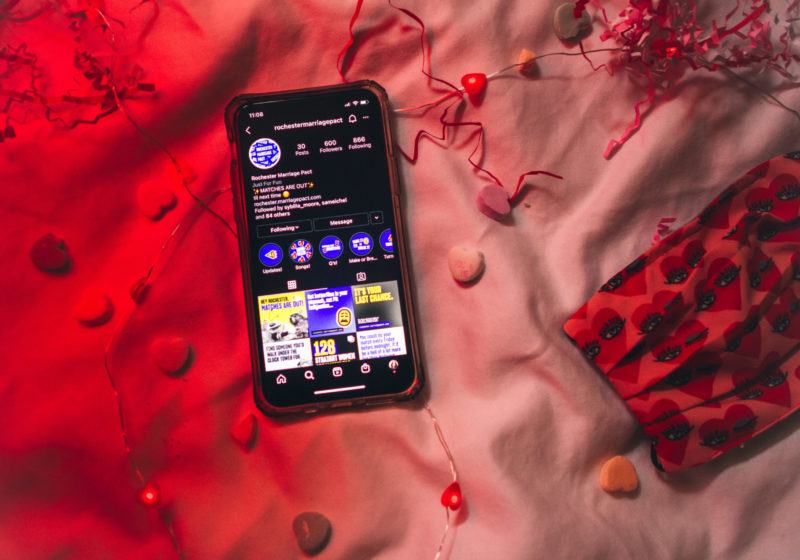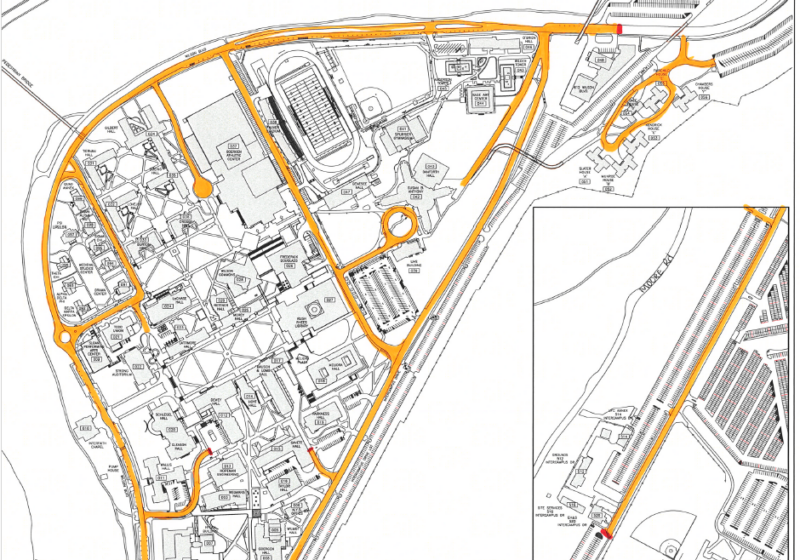The funny thing about the Rochester Marriage Pact, to me, is that everyone’s perspective on it seemed to shift. Initially, it was seen as unnerving (most likely because of how follow requests and promotional emails were sent out en masse).
However, as it progressed, the expectation and excitement grew on campus. I found myself in both camps. While I was worried about my personal data and wanted to know who UR representatives were, the prospect of a campus-wide compatibility test was too intriguing to pass up.
One thing I didn’t expect was how seriously some people took their matches. Some friends of mine were unwilling to take the survey because they’re in relationships, despite there being an option to note that. Others got their hopes up for a match that they ended up not being into. I took the survey for fun, mainly, so my results didn’t matter to me. However, as I continued to talk to people, I noticed a huge discrepancy between all of the matches that had been made.
A colleague of mine received a 100% match, and as we found the person they matched with through social media, that initial elation quickly changed to discontent. Obviously, the questions in Marriage Pact (which you can still look at via this typeform) are unable to account for physical attraction, but it does beg the question: How important is that initial spark?
Other friends of mine received matches far below what I thought would be the compatibility threshold, from numbers in the 70s to a 2% match. If the point is for everyone to be matched with someone compatible to them, what’s the point of connecting them to a person with whom they have 5% of their views in common?
Another strange quirk of the algorithm I noticed was that all of the bi women I know were matched with women instead of men — and after RMP sent out an email talking about the excess of around 300 straight women who had the potential to be put on the RMP waitlist, I started to question the accuracy and validity of the system.
The more people I talked to, the more questions I had, so I decided to reach out to the RMP Instagram for insight. After getting approval for a potential interview, a fellow Campus Times staffer and I were placed into a text message group chat to schedule a date and time. However, a couple days later, the four UR-specific marriage pact student employees declined to interview, citing concerns about their confidentiality. Even after promising anonymity in our story, the UR students declined, stating that they had no guarantee those of us at the CT would keep our word. We found this a bit ironic given that their privacy statement is an impermanent Google Doc that gives no more than a promise not to sell or share data. Thus, we had to continue by interviewing the Stanford (where RMP started) students who implemented the Marriage Pact at UR. A lot of the questions we had concerned analytics and user confidentiality, sparked by previous conversations with and posts from the student body.
Some answers that we received from the Stanford-based staff of Marriage Pact (which included the CEO of the company, Liam McGregor):
- The emails that the Marriage Pact reached out to for promotional purposes were all found through the CCC directory. The idea was to expose it to as many people as possible in order to garner more matches.
- The Marriage Pact was not contacted by SA or administration: Instead, a small group of Rochester students reached out after seeing a TikTok from Duke University and applied to have Marriage Pact implemented here. Similar programs are currently happening at universities such as UVM and Wake Forest.
- The UR students who were a part of this program mainly served to adjust the Marriage Pact survey to fit UR’s campus and curate promotional materials to appeal to our student body specifically. No data or information was shared to these students or to the staff at large — instead, everything is filtered through an algorithm that matches people by itself. For other concerns about data privacy, this Google Doc can be found on their website.
- For the excess of straight women, after the promotional material was sent out, the Marriage Pact team was able to even out the ratio in order to provide all participants with matches. If there had not been enough people, those women would have been put on a waitlist and been “friendship matched” if there were enough people on the waitlist. Similarly, there is no bias in the Marriage Pact algorithm for queer matches — if there is not a compatible match, people would be put on the waitlist as well.
- For the compatibility percentage issue, McGregor specifically noted that the algorithm focused on the interactions between various questions and thus weights answers accordingly. Because of the fact that some questions were weighted heavier than others, there is an optimization issue that leads to some matches having a dramatically low percentage. Instead of focusing on giving everyone the best match possible, the algorithm is focused on making the best matches out of the campus (on a 1-1 basis) in its entirety, which leads to some students falling towards the lower end of that spectrum. Students could be matched with students from any year.
- The Marriage Pact can happen again. If UR students are interested in the Marriage Pact continuing for subsequent semesters or years, they’re encouraged to reach out to the Marriage Pact team. The link to apply to bring Marriage Pact to a given university can be found here.
RPM’s main goal, according to the staff, is to provide students with new connections and new stories. In that way, I think they succeeded. For the couple of days that Marriage Pact hit its stride, campus was abuzz with conversation and lighthearted gossip. For my story, I matched with a friend of a friend, and as a first-year here at UR, it was nice to get connected with someone outside my circle despite a pandemic.
However, there are several things I think would be worth considering for the future of RPM (or similar programs). For instance, shouldn’t there be a question about age preference? Multiple seniors on campus were matched with first-years, and that initially proved difficult to navigate for both parties. If your views are compatible but your life experiences are completely different, that would hinder even a substantial friendship from forming for two people, let alone attraction.
Hindsight is 2020, but the Marriage Pact has run their algorithm at several schools before UR. In future years, we can look back on this moment fondly as this program potentially thrives on our campus, or maybe it will stay as a funky little stain in some people’s college memories. All of these perspectives are stories worth telling, and maybe, through a program like Marriage Pact, that is the true point: giving people an experience rather than a true perfect match.





